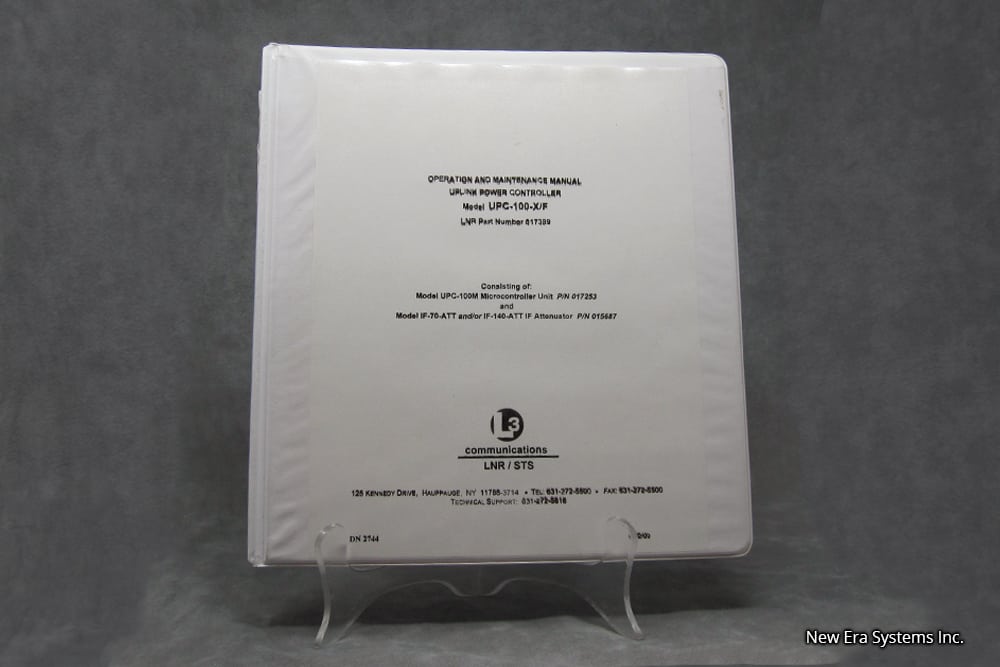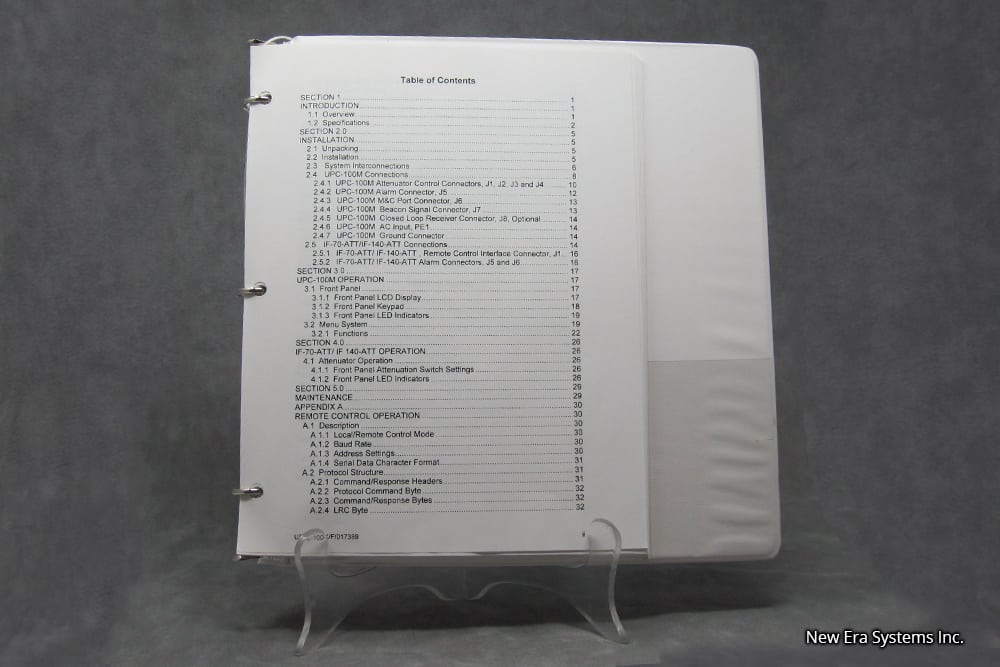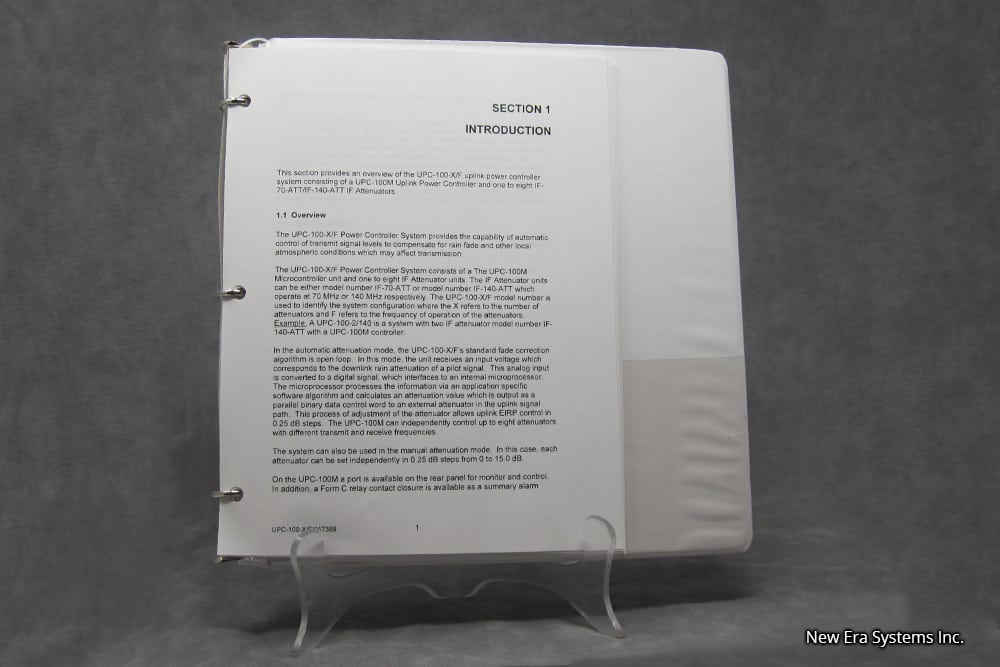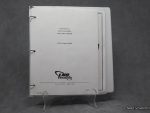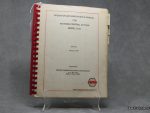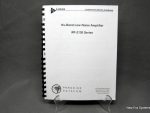Description
L3 Communications UPC-100-X/F Manual
This L3 Communications UPC-100-X/F manual provides an overview of the UPC-100-X/F uplink power controller system consisting of a UPC-100M Uplink Power Controller and one to eight IF70-ATTAIF-140-ATT IF Attenuators.
Overview
The UPC-100-X/F Power Controller System provides the capability of automatic control of transmit signal levels to compensate for rain fade and other local atmospheric conditions which may affect transmission.
The UPC-100-X/F Power Controller System consists of a The UPC-100M Microcontroller unit and one to eight IF Attenuator units. The IF Attenuator units can be either model number IF-70-ATT or model number IF-140-ATT which operate at 70 MHz or 140 MHz respectively. The UPC-100-X/F model number is used to identify the system configuration where the X refers to the number of attenuators and F refers to the frequency of operation of the attenuators. Example: A UPC-100-2/140 is a system with two IF attenuator model number IF140-ATT with a UPC-100M controller.
In the automatic attenuation mode, the UPC-100-X/F’s standard fade correction algorithm is open loop. In this mode, the unit receives an input voltage which corresponds to the downlink rain attenuation of a pilot signal.
This analog input is converted to a digital signal, which interfaces to an internal microprocessor. The microprocessor processes the information via an application specific software algorithm and calculates an attenuation value which is output as a parallel binary data control word to an external attenuator in the uplink signal path. This process of adjustment of the attenuator allows uplink EIRP control in 0.25 dB steps. The UPC-100M can independently control up to eight attenuators with different transmit and receive frequencies.
The system can also be used in the manual attenuation mode. In this case, each attenuator can be set independently in 0.25 dB steps from 0 to 15.0 dB.

